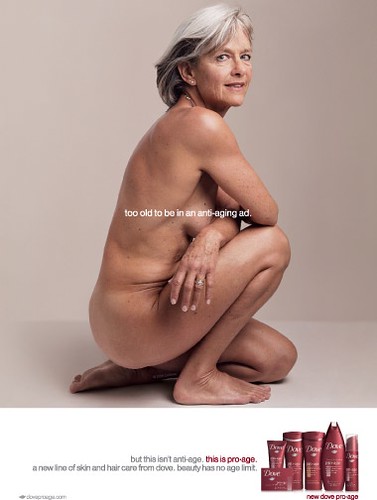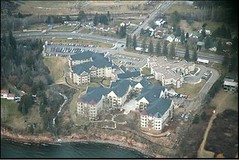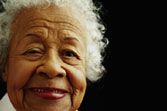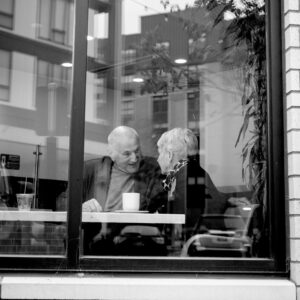We Could Make This a lot Simpler
The Metropolitan Agency on Aging has a very nice web site. But let’s pretend I’m seeking help at home for a senior relative and I want to keep them out of a nursing home. Look at the myriad of terms I’d have to master: elderly waiver program (called EW), alternative care grant (sometimes called AC), Medical Assistance for Employed Persons with Disabilities (guess what that’s sometimes called: MA-EPD, or then there’s the obvious home care program called Community Directed Community Supports (CDCS). No wonder why only 120 people are using it statewide.Couldn’t we simplify all this stuff and make it easier to help keep people living where they want to live? What about running all of these programs through Agencies on Aging rather than counties and make these agencies regional resource hubs or one-stop shops for aging resources.A big transformation opportunity for nursing homes is to become 'the source' for successful aging in a community. The one place you know you can turn to for wellness information, fassistance for navigating this twisted and turned system, and putting the customer in control of how they age. The nursing homes that are able to make this turn and become community resources for successful aging are going to thrive, not merely hang by their fingertips to survive.
Senior Momentum and Technology
Technology is playing a much bigger role in our existing senior housing and new Ecumen senior housing developments. Businessweek has a great article on technology’s growing role in improving seniors' life quality and independence. Following is an excerpt and link:
Senior Momentum
Can design and technology deliver a golden age of aging?
by Juanita Dugdale
One of life’s cruel ironies is that half of society is always dying to grow up while the other half begrudgingly grows ready to die. The halves used to balance out, with an ample labor pool of young people around to look after the elderly, who, likely as not, expired soon after retirement. But today it’s impossible to escape the sobering news that seniors will not only double in number within two decades, they will also live much longer. In 2011, the first members of the baby boom generation will turn 65. If they survive another 20 years, which is highly possible, the ranks of what demographers call the 'oldest old' will swell to epic proportions. Considering that today’s seniors already compete for care, aging boomers face a radically compromised lifestyle€”and society as a whole will suffer€”unless we quickly develop economical ways to bridge the care gap.Scared by the scenario? Then consider this for relief: The next decades may prove to be the first time in history when it will be really interesting, if not downright cool, to grow old, especially for technophiles. Since 2000, the global race to develop high-tech solutions for problems challenging the elderly has accelerated, particularly where critical shortages of caregivers already exist, as in Asia … . Read Entire ArticleJuanita Dugdale is a contributing writer to I.D. Magazine. She last reported for I.D. on the new design initiative at the School of the Art Institute of Chicago. She is collaborating on a book about wayfinding design and also planning a seminar about the spirituality of aging.
Important Work
Sue Schwartz Nelson, Mary Leber and Janet Ingersoll are long-term care consultants at Ecumen. They log hundreds of miles per year helping nursing homes improve their operational performance. It is behind-the-scenes work that is extremely important and the consultants aren’t often the story; however, Ecumen’s work recently was highlighted in this story in the Duluth News Tribune around their work with Chris Jensen Home.
John Ewoldt on Long-Term Care Insurance
Interesting story in yesterday’s Minneapolis Star Tribune by John Ewoldt on long-term care insurance.As John mentioned in his article, most baby boomers told us in the Ecumen Age Wave Study that they find long-term care insurance difficult to understand and want more hybrid products, such as disability insurance with a long-term care benefit.This is where there is great potential for the private market and government to work together. The market could deliver more appealing, more flexible, easier-to-understand products that people see benefit in. Meanwhile, state government could create a one-stop web site where people can easily compare state-endorsed products. If we want to get more people to pay for their long-term care and plan ahead for retirement costs, we have to create products that people will use and can benefit from earlier in their lives.
The Pro-Age Campaign By Dove
 Posted by Kathryn Roberts, CEO and PresidentI love, love, love the new Pro-Age campaign by Dove. Aging is about living, and the Dove campaign emphasizes it in spades. What Dove is doing is stepping out of the stale stereotypes of aging. Check out these findings from Dove’s global study on perceptions of aging. - 91% feel the media and advertising need to do a better job of representing realistic images of women over 50. - 87% of women believe they are too young to be old. You’ll find similar findings in our Ecumen Age Wave Study. So we know people are thinking differently about aging. What an opportunity for us in the senior housing and services profession. George Burns, who lived to be a centenarian, said, 'You can’t avoid getting older, but you don’t have to get old.' Words of experience for all of us.
Posted by Kathryn Roberts, CEO and PresidentI love, love, love the new Pro-Age campaign by Dove. Aging is about living, and the Dove campaign emphasizes it in spades. What Dove is doing is stepping out of the stale stereotypes of aging. Check out these findings from Dove’s global study on perceptions of aging. - 91% feel the media and advertising need to do a better job of representing realistic images of women over 50. - 87% of women believe they are too young to be old. You’ll find similar findings in our Ecumen Age Wave Study. So we know people are thinking differently about aging. What an opportunity for us in the senior housing and services profession. George Burns, who lived to be a centenarian, said, 'You can’t avoid getting older, but you don’t have to get old.' Words of experience for all of us.
Does your Senior Housing Community Have IT?
Posted by Mick Finn, Chief of Operations The other day I had the opportunity to meet with a number of senior housing leaders from around Ecumen. We were talking about IT.IT is that feeling you get when you walk into a senior housing community, whether it’s independent living, assisted living or a nursing home and you just feel good. You get a warm, comfortable feeling. There is a vibe. People greet each other by name. They smile. They laugh. They’re genuine. You just know that that community just has IT. We couldn’t point to one thing that IT is, but here are some of the things that I think contribute to IT in senior housing.- A focus on hospitality. We’re not just providing bricks and mortar, we’re creating home from our greeting on the phone to the care with which we make dessert.- Authentic people, who are completely honest with each other and their customers, in good times and bad.- Collaboration - people getting out of their own worlds to put their heads together with colleagues.- Openess to take risks to make things better, and abandoning fear of failure.- A wide open door, where people can have candid conversations and ask about things on their mind.- An understanding of the big picture. People in places that have IT know how their job contributes to something larger.- Plenty of opportunities for people to continue learning and growing.- Looking forward. People at places that have IT are continually looking forward, striving to improve upon IT.This is just a partial list of what I think contributes to IT. What do you think contributes to IT? One other thing about IT. You know you have IT when your customers and team members want to be part of the community you help create rather than simply 'having to be there.'
Repositioning Senior Housing in Duluth
Posted By Dana Wollschlager, Director of Real Estate Development
 The photos above show the 'today' and 'yesterday' of our senior housing community in Duluth, Minnesota, called Lakeshore. Lakeshore is located just down the street from the historic Glensheen mansion.This senior housing development was a complete repositioning of an outdated nursing home. The new Lakeshore was designed with a lot of input from community members. They wanted this to be a place that you could live independently, but where you’d have easy access to health care. They wanted it to offer some of the best views on Lake Superior, and wanted it to be a destination place or a community that was an integral part of the larger community rather than isolated. Lakeshore, which includes full independent living, assisted living, memory care and rehabilitation services, hits all of those desires.We’ll soon direct you to the new Lakeshore web site. We’re finishing up some changes and adding some new photos (talk about great views). The new Lakeshore is a great example of senior housing development that repositions an outdated nursing home and creates housing that people want to live in while making health services easily accessible. The new Lakeshore expresses that 'aging is about living.'Next time you’re headed to the North Shore stop at Lakeshore and grab a sandwich or a pie at their Cascade Cafe. People from around around the area drive here for lunch, light dinner or a snack for the road.
The photos above show the 'today' and 'yesterday' of our senior housing community in Duluth, Minnesota, called Lakeshore. Lakeshore is located just down the street from the historic Glensheen mansion.This senior housing development was a complete repositioning of an outdated nursing home. The new Lakeshore was designed with a lot of input from community members. They wanted this to be a place that you could live independently, but where you’d have easy access to health care. They wanted it to offer some of the best views on Lake Superior, and wanted it to be a destination place or a community that was an integral part of the larger community rather than isolated. Lakeshore, which includes full independent living, assisted living, memory care and rehabilitation services, hits all of those desires.We’ll soon direct you to the new Lakeshore web site. We’re finishing up some changes and adding some new photos (talk about great views). The new Lakeshore is a great example of senior housing development that repositions an outdated nursing home and creates housing that people want to live in while making health services easily accessible. The new Lakeshore expresses that 'aging is about living.'Next time you’re headed to the North Shore stop at Lakeshore and grab a sandwich or a pie at their Cascade Cafe. People from around around the area drive here for lunch, light dinner or a snack for the road.
AOL Founder Tackles Health
Taking control of our own health earlier in our lives is essential to the health and financial future of our country, Minnesota and long term care, especially as we approach the age wave. If we can keep people healthier longer, we can help them live longer in their own homes and hold down public costs for expensive long term care. The average cost in the U.S. for assisted living is $35,000 per year; a nursing home is about $75,000 annually. Most nursing home costs are paid by the government through Medicaid.Steven Case, founder of AOL, is combining technology with people’s desire for more personal control over their future. Last Thursday he launched RevolutionHealth.com. According to CBS Marketwatch, his goal is to make health care resources, services and products easy to find and use so people will track their health just as they track their stocks online.Case says he’s targeting women in this venture, as they’re seen as most often the 'keepers of health' in the household. An area that would be very beneficial for Case to add to this site would be resources on long term care. Many of these baby boomer women he’s focusing upon are caring for their parents as well as their children.It could include information on what to ask a home care company, assisted living community, nursing home or other senior housing community when shopping for such services; how to pay for long term care if needed; a checklist to consider when trying to keep a parent as independent as possible … and other questions that are increasingly on baby boomers' and others' minds. Long term care providers also could provide such a site and really become the local knowledge broker for people.People turn to the net in droves. Of Internet users, 80%, or about 113 million adults, have researched a health topic online, according to the Pew Internet & American Life Project, a Washington nonprofit that looks at the social impacts of the Internet. Technology is only going to play a bigger impact in giving us more control in taking care of ourselves and aging successfully.
Minnesota and Senior Housing Development
Minnesota has about 1.5 million baby boomers. According to Ecumen’s Age Wave Study, here are the most important characteristics to them as they think about senior housing:
Independence
Nearby friends and family
Privacy
Easy-access health care
Safety
Ownership instead of renting
Easy-access shopping
Availability of spiritual opportunities
Easy-access transportation
Meaningful volunteer opportunities
Welcomed community involvement
Easy-access fitness opportunities
Travel opportunities
Educational opportunities
Multi-generational community
Waconia, Minnesota, recently built senior housing on the main street close to many community amenities rather than out in a corn field. It meets many of the criteria that baby boomers think are important to them. As we think about the future of Minnesota and senior housing, this is a great check list to start with and use in planning senior housing development.
Aging is an Active Verb!
 Aging is an active verb!Kudos to Aging Services of California, the state’s non-profit senior housing association, for adopting the tagline above. Anne Burns Johnson, president and CEO of Aging Services of California, said. 'Our goal is to present aging as an inclusive process, not a label placed on the elderly.'This type of positioning, focusing on aging as inclusive (everyone does it) and all about living (even at the end of life) is where the senior housing profession needs to be. We so often in senior housing and in society focus simply on aging as declinism. (I just saw an ad for assisted living. A woman was patting the senior customer on the head. It was so patronizing.) There is so much more to aging than physical decline, but we miss it.Guess what? Seniors still make out, still drive, still swim, still travel, still like to go to great restaurants … . and even when their bodies don’t let them do these things, they are still living. As we look at positioning in the senior housing profession via advertising, interactive communications, direct mail and public relations we and our customers would be well served on emphasizing that 'aging is an active verb.'
Aging is an active verb!Kudos to Aging Services of California, the state’s non-profit senior housing association, for adopting the tagline above. Anne Burns Johnson, president and CEO of Aging Services of California, said. 'Our goal is to present aging as an inclusive process, not a label placed on the elderly.'This type of positioning, focusing on aging as inclusive (everyone does it) and all about living (even at the end of life) is where the senior housing profession needs to be. We so often in senior housing and in society focus simply on aging as declinism. (I just saw an ad for assisted living. A woman was patting the senior customer on the head. It was so patronizing.) There is so much more to aging than physical decline, but we miss it.Guess what? Seniors still make out, still drive, still swim, still travel, still like to go to great restaurants … . and even when their bodies don’t let them do these things, they are still living. As we look at positioning in the senior housing profession via advertising, interactive communications, direct mail and public relations we and our customers would be well served on emphasizing that 'aging is an active verb.'

